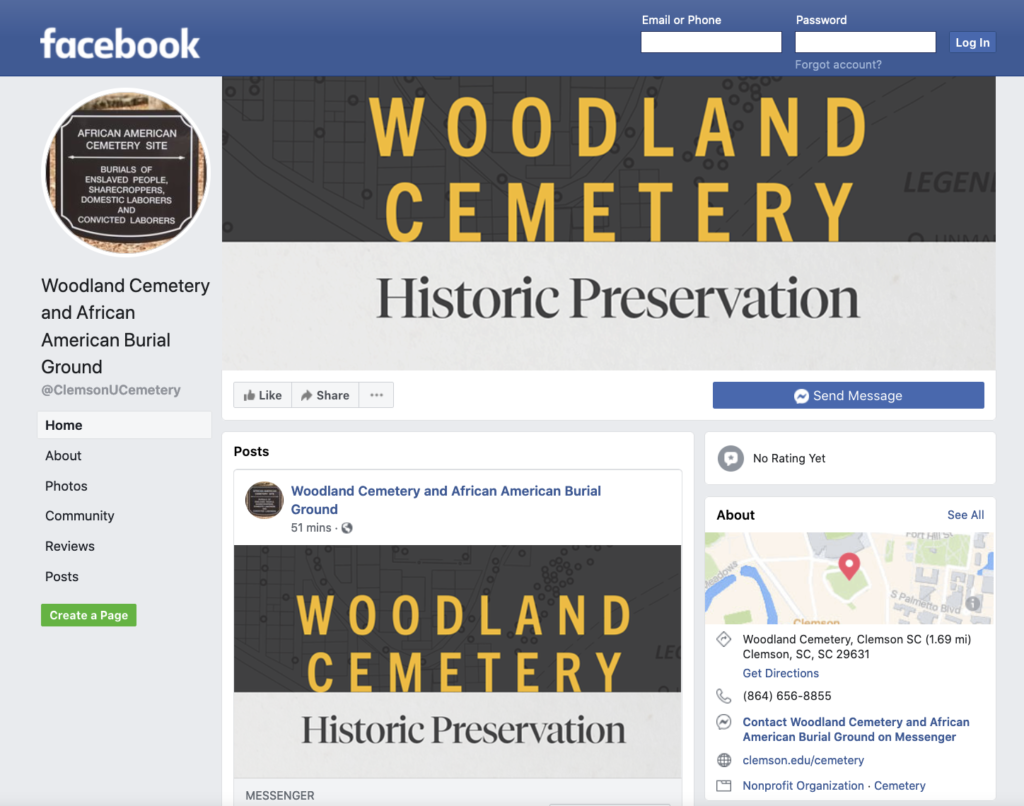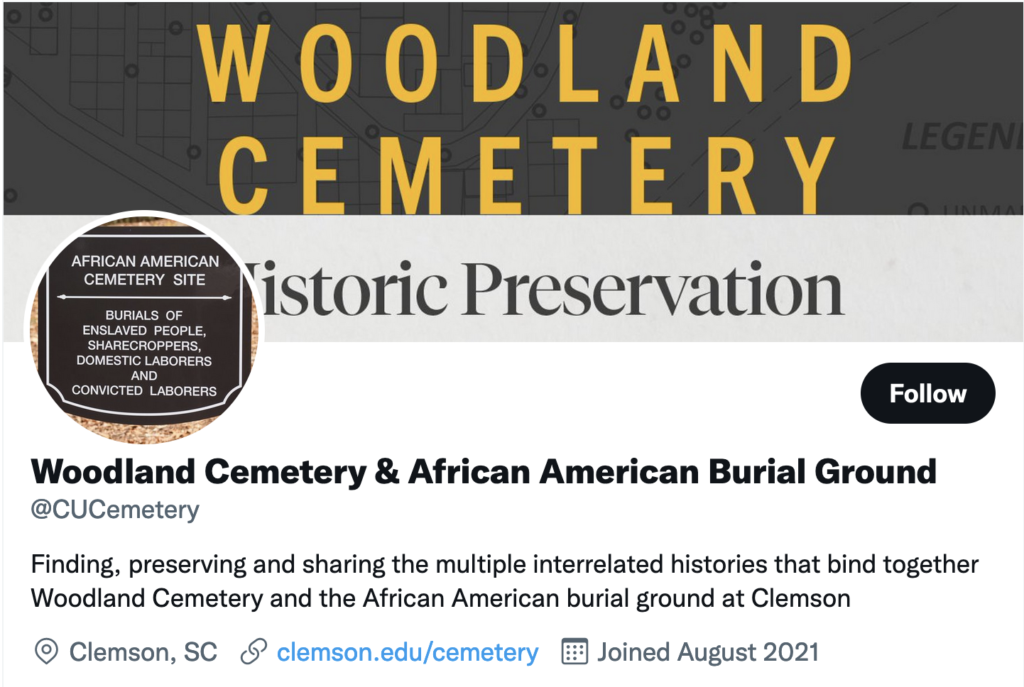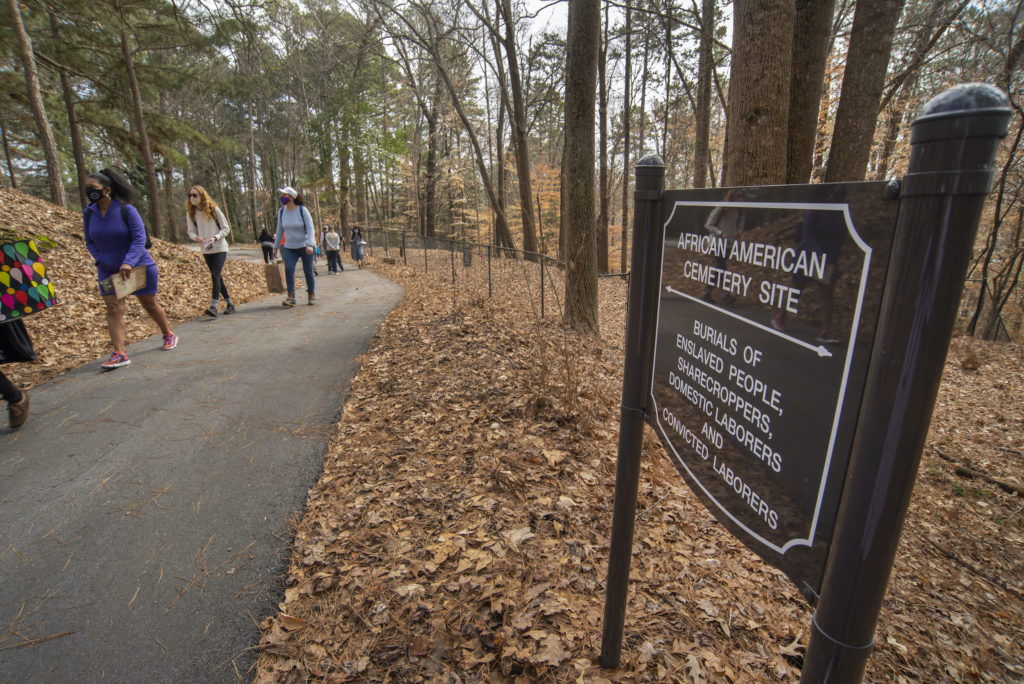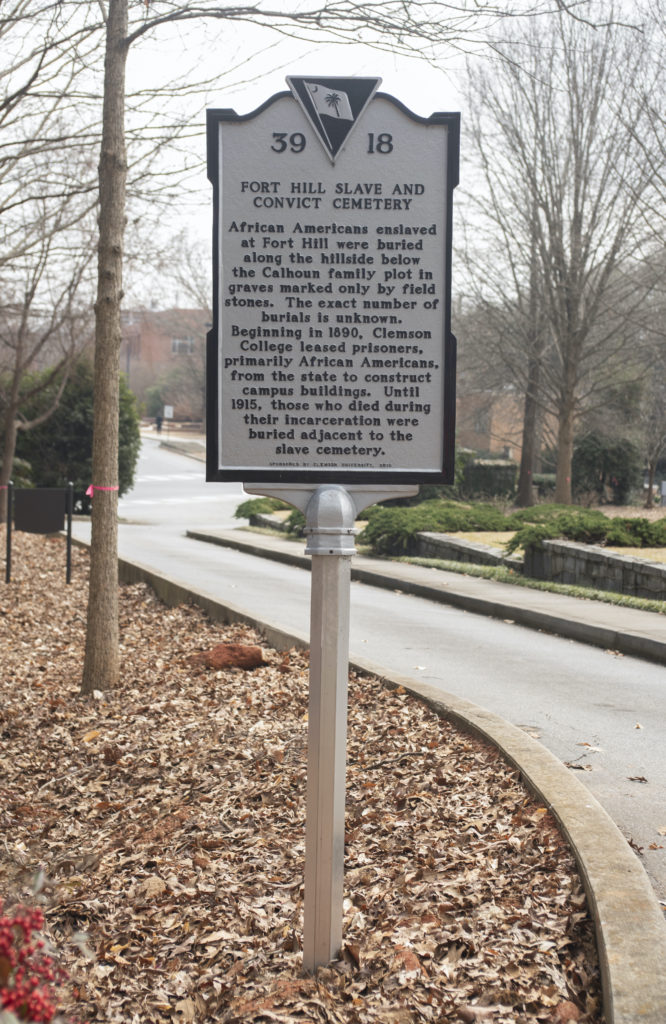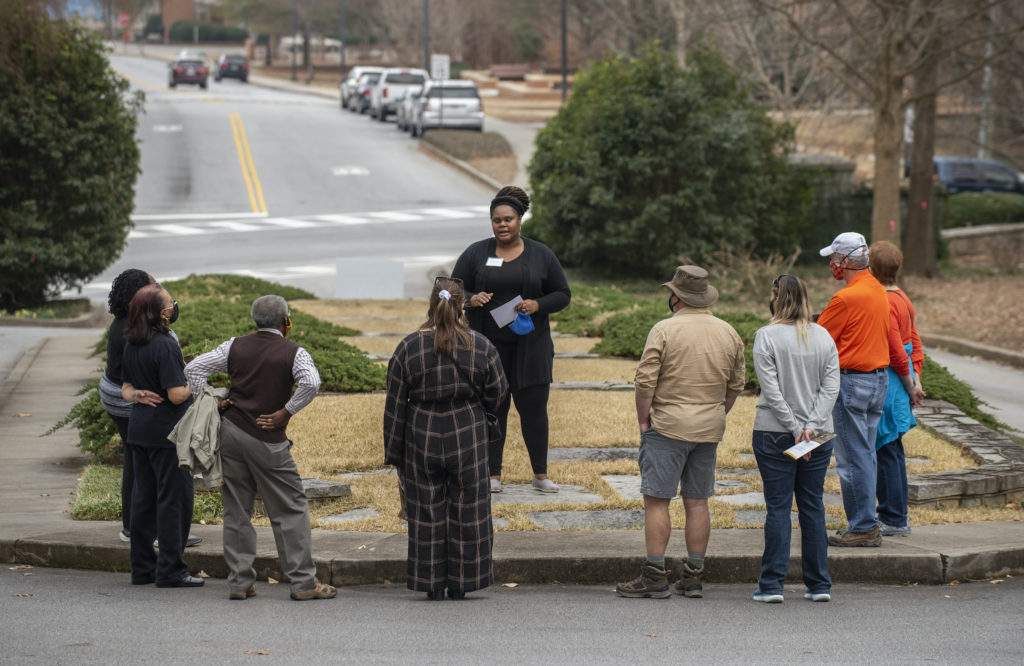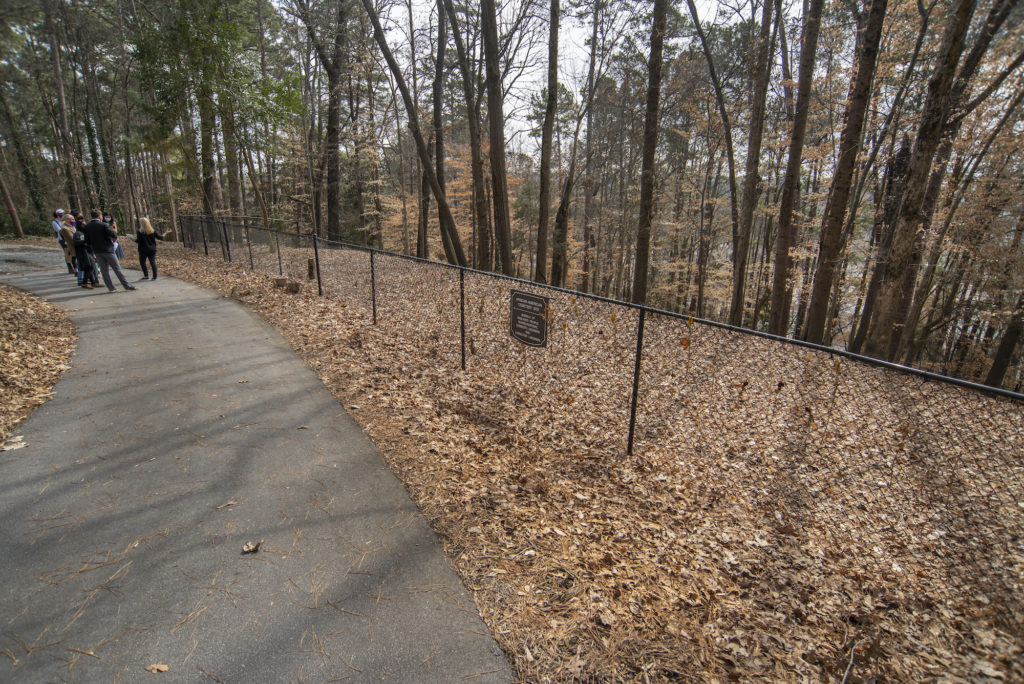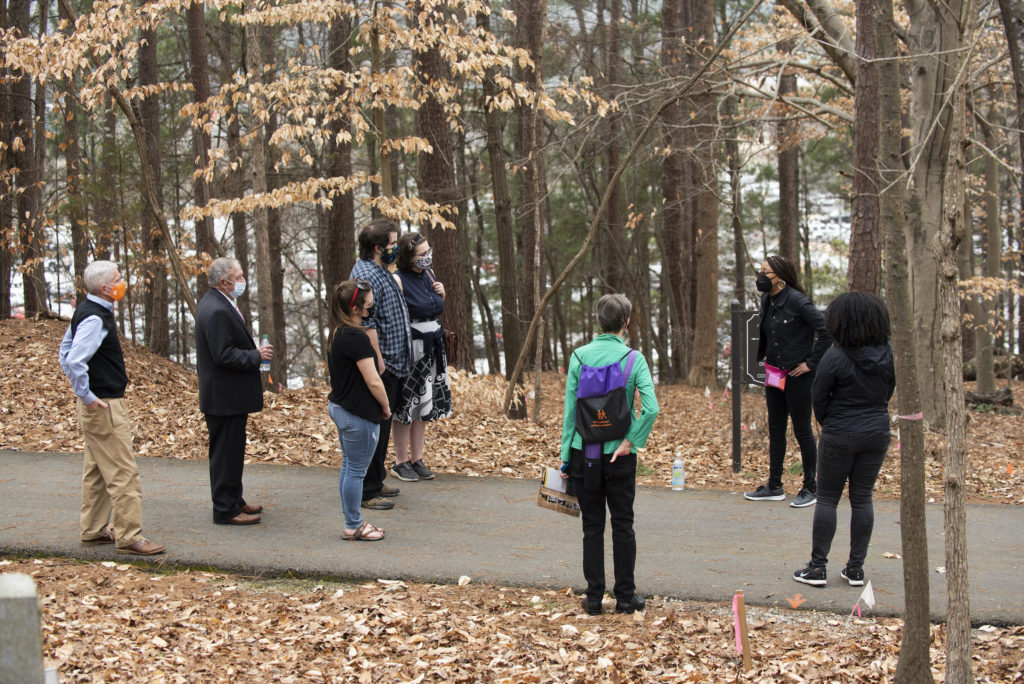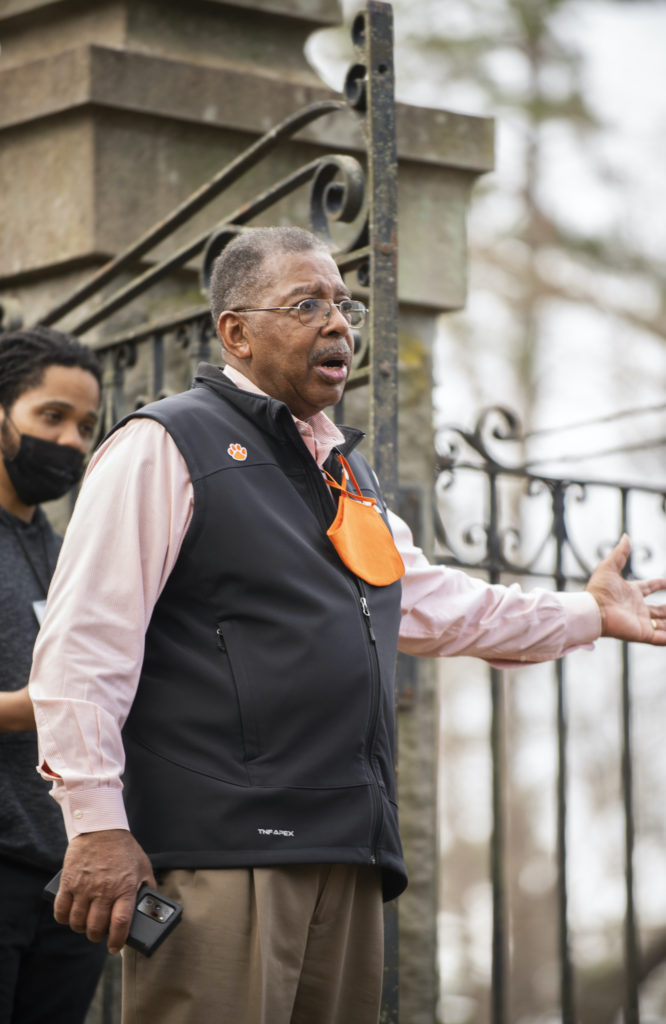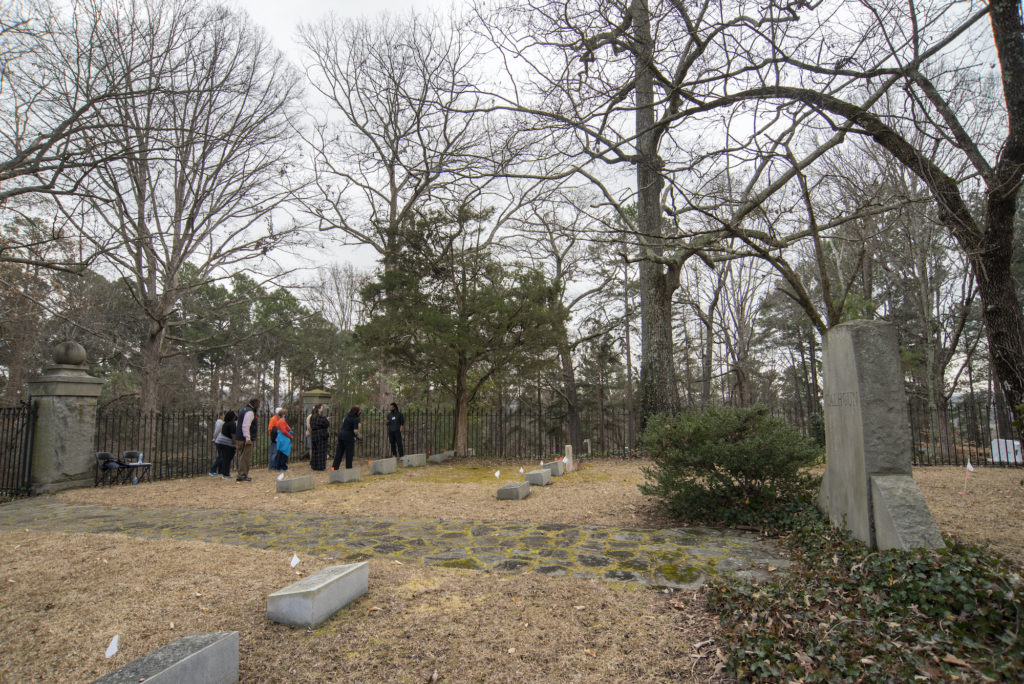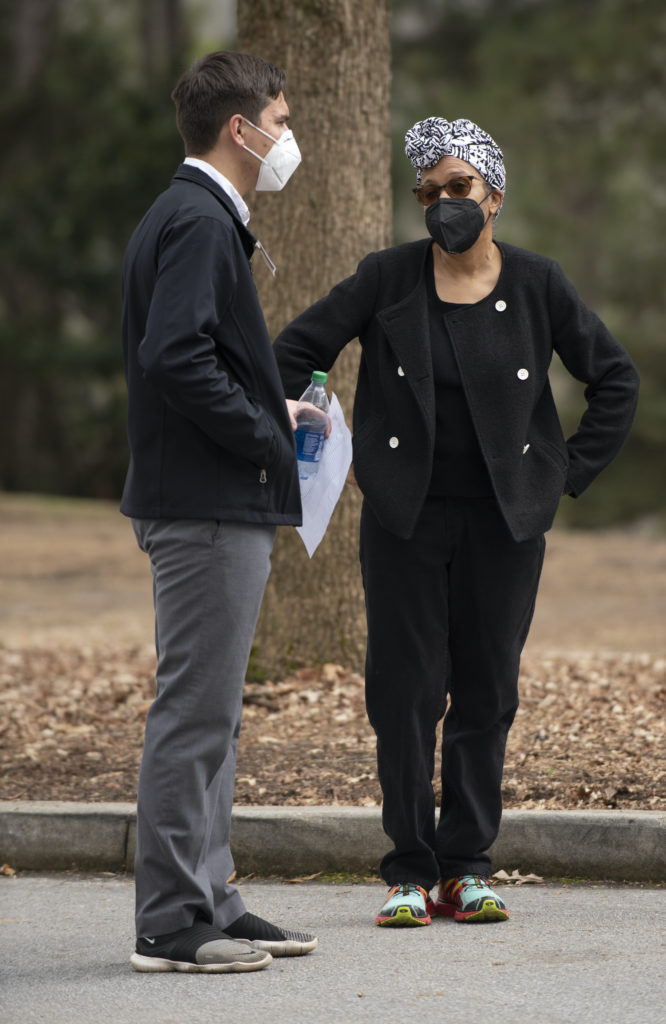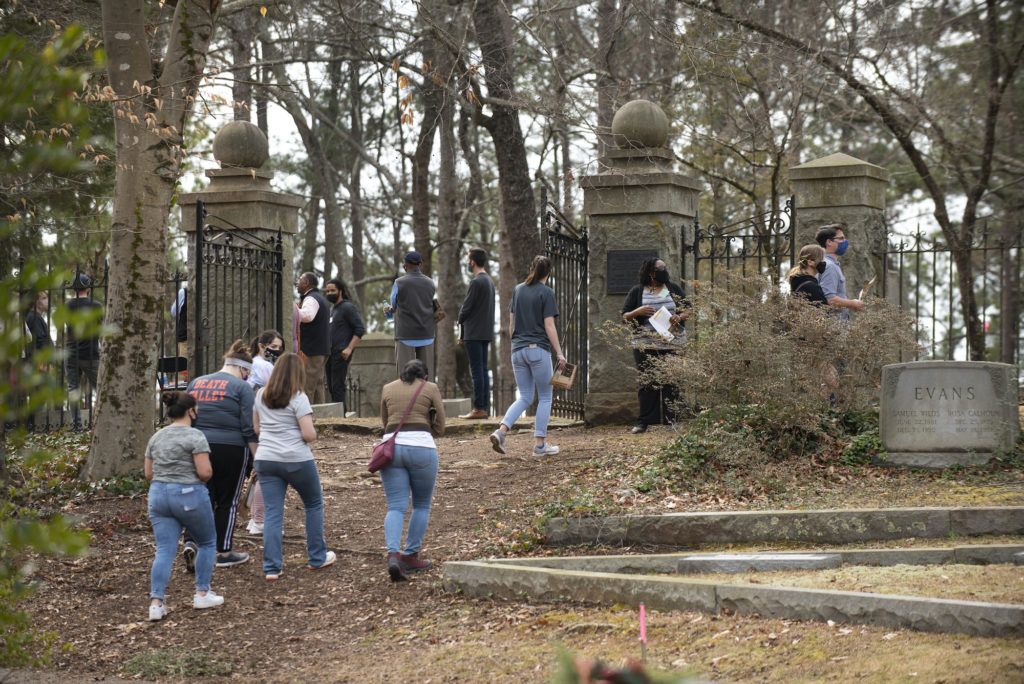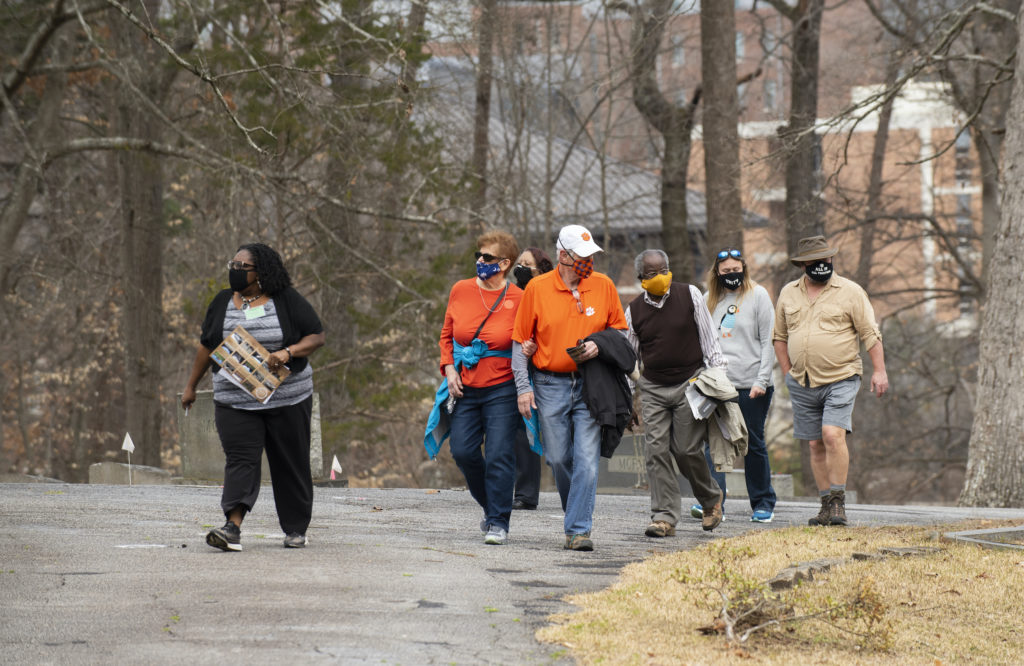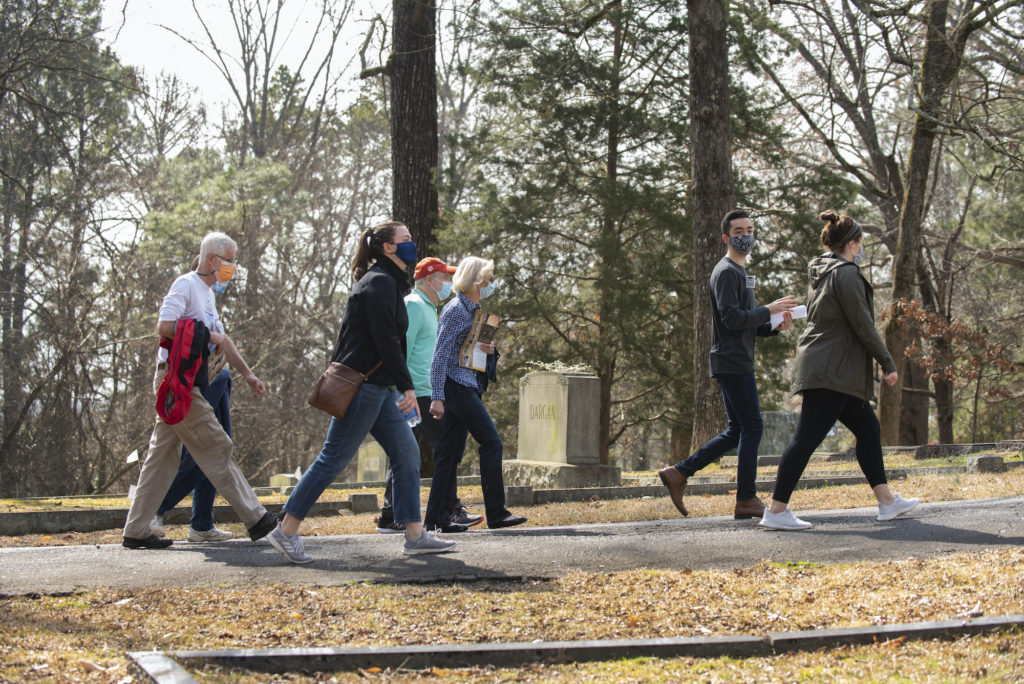Download the full August 2022 Newsletter
Research Update
Dr. Mandi Barnard has continued to coordinate research for the team for the preservation phase of our project. She is currently examining the papers of Clinton Calhoun Lemon and Dr. Rupert Fike to gain an understanding of how college athletics shaped development around Cemetery Hill.
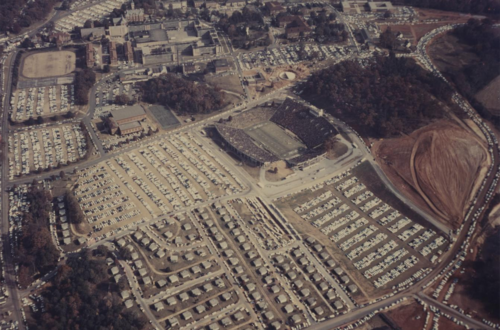
Dr. Sara Collini has continued to research the full impact of Clemson Athletics on Cemetery Hill and the surrounding landscape, including the construction and expansion of parking lots and paving of roads surrounding Memorial Stadium. She has also been working with the team on reading the meeting minutes and annual reports of the Board of Trustees from 1888 to the present. The team is noting all mentions of the cemetery and surrounding landscape from these records, along with all relevant collections in the campus archives, and putting together a comprehensive historical timeline.
Dr. Rhondda R. Thomas has been assisting with research in the archives regarding the documentation of the history of the cemetery. She has also continued to learn more about the Tom Littlejohn housing project that Clemson originally designed for Black wage workers. Additionally, she is coordinating an effort to develop a database of memorials universities have established to honor enslaved laborers and Black employees.
On Monday, July 18, 2022, Burt Pinnock, FAIA, NOMA, Principal for Baskervill Architects, visited Clemson University to provide a consultation regarding the process for developing a memorial for Woodland Cemetery and the African American Burial Ground. Mainly based in Virginia, Baskervill’s architectural work is community-driven in its commemoration of people and places. These projects include “Hearth: Memorial to the Enslaved” at the College of William and Mary in Williamsburg, Virginia, “Reconciliation Plaza and the Richmond Slave Trail” in downtown Richmond, Virginia, and “the Twin Memorials” at Emory University in Atlanta, Georgia.
Within his presentation, Mr. Pinnock emphasized including descendant communities in the room for decision-making, determing what an undisputed truth is among people with differing perspectives, and surveying what communities want in memorialization. The remainder of his visit included a “Call My Name” tour facilitated by Dr. Thomas, a Woodland Cemetery tour from the cemetery team, a visit to the Clemson Area African American Museum, and a tour of the Hopewell Plantation House with Clemson University Historian Dr. Otis Pickett, Sr.
Community Engagement Update
Marquise Drayton has been steady in his outreach efforts as the new Community Engagement Assistant. On July 21 and 28, 2022, he volunteered with the Blue Ridge Community Center in Seneca, SC, for their summer reading program. Geared towards rising third- and seventh- graders, this initiative is designed to curb the learning loss for students during the summer break.
On July 22, Drayton met with Seneca City Museum leaders Nick McKinney, Director of the Lunney Museum, and Shelby Henderson, Founding Director of the Bertha Lee Strickland Museum and executive director of the City of Seneca’s Department of Arts, History, and Culture. They informed him about the local history of Oconee County, the demographic makeup of the city in comparison to the county, and influential people to contact concerning oral history. After speaking with Drayton in City Hall, they led him on a tour of Mountain View Cemetery and then to Oak Grove Cemetery, a historically Black cemetery. Both are owned by the City of Seneca. Within each, he could see how challenges with historic preservation and remembrance have persisted not only at Clemson University’s cemetery but in neighboring towns.
On July 10, 2022, the cemetery team led free drop-in tours at Woodland Cemetery from 12pm to 4pm. It was a decent turnout of 17 people, including a community group known as “Outdoor Afro” who have an interest in education, conservation, and nature.
We want to thank Marissa Davis for contributing to the Woodland Cemetery Project during the past two years. She will leave the project in early August as her time in the Clemson History M.A. program is ending. Her next step is to obtain a master’s degree in library and information science and work towards becoming an archivist.
Dr. Rhondda R. Thomas has reached out to her counterparts at other universities to learn more about community engagement practices, particularly in the development of preservation plans and memorials. She is also working closely with community partners in the cities of Seneca and Clemson on the development of a proposal for a Black Heritage Trail that shares the history of people of African descent on campus and in local communities.


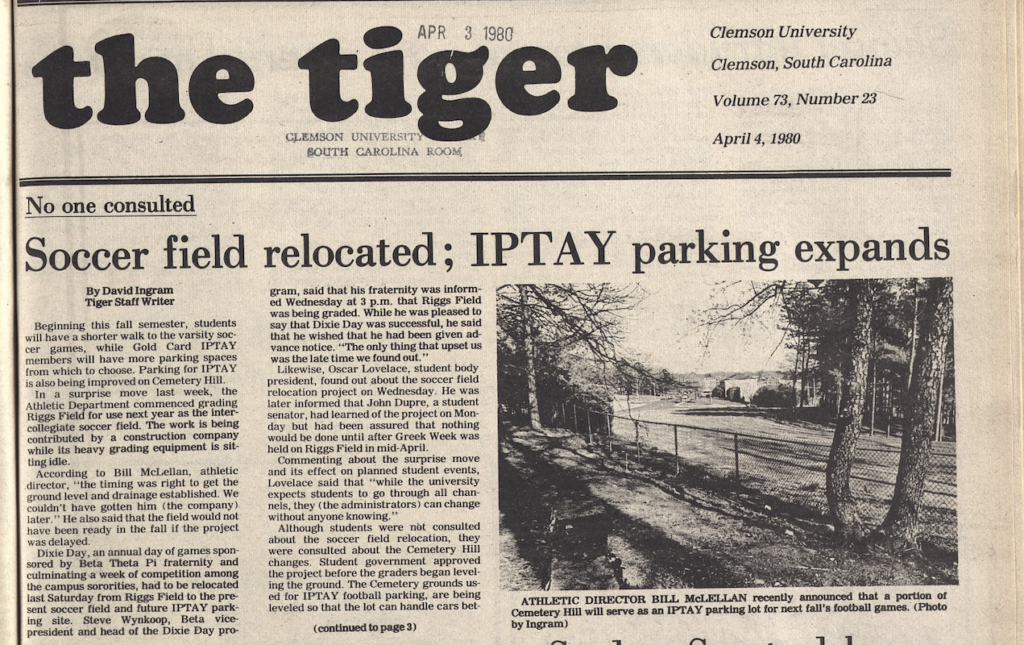
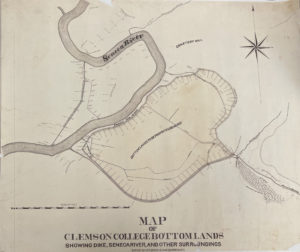
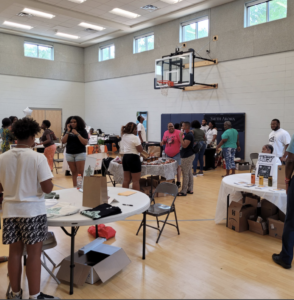
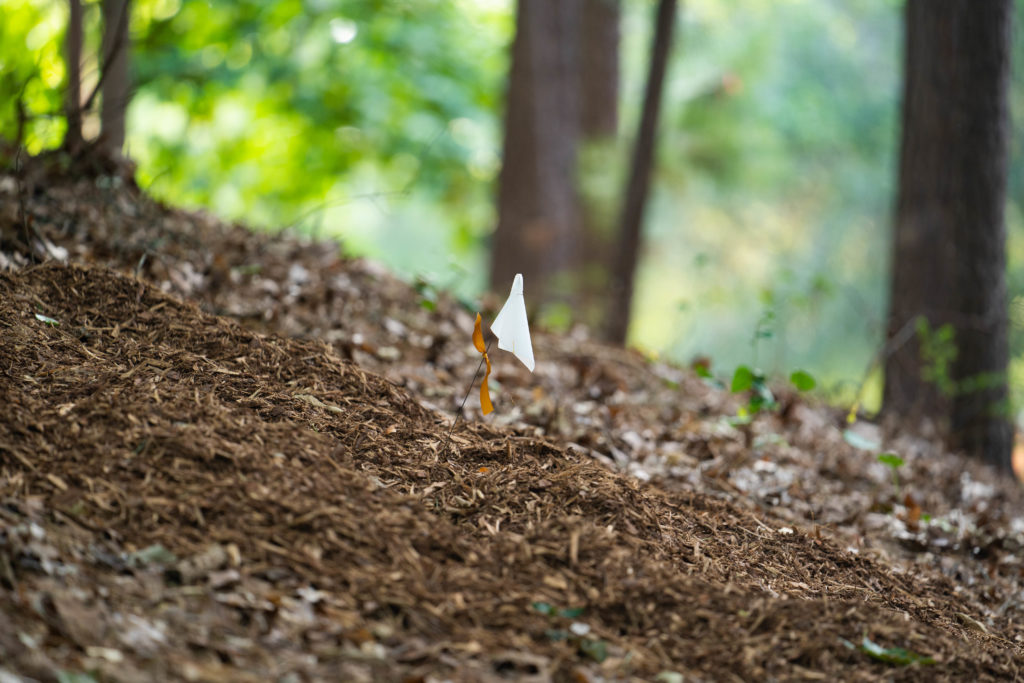

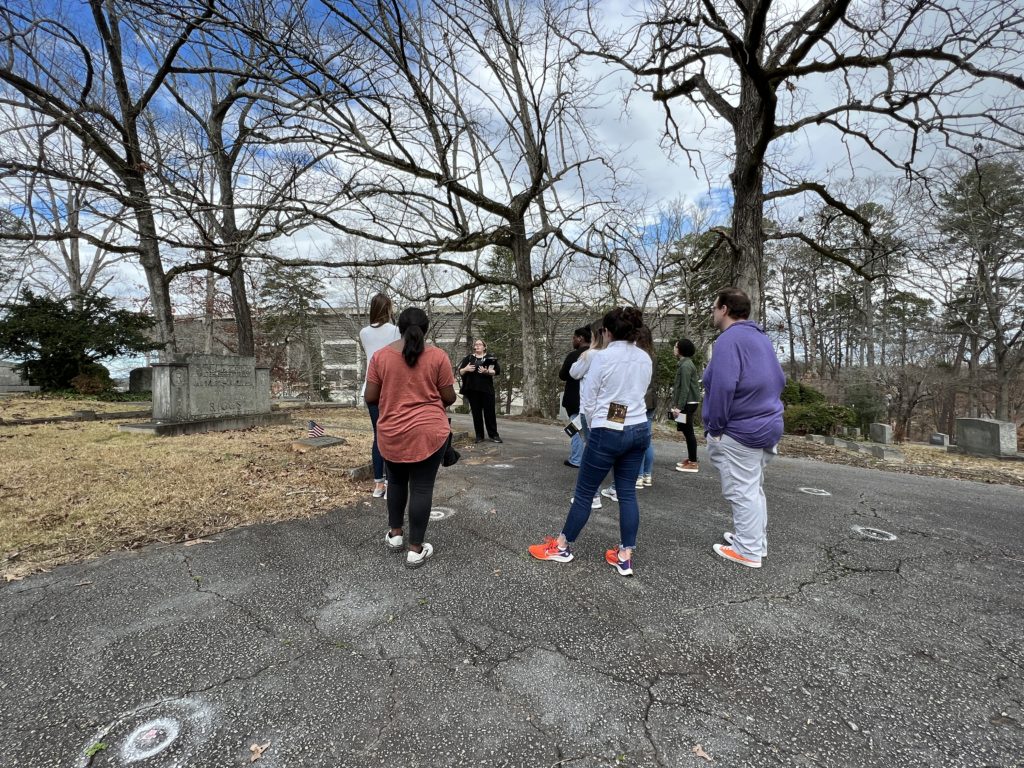
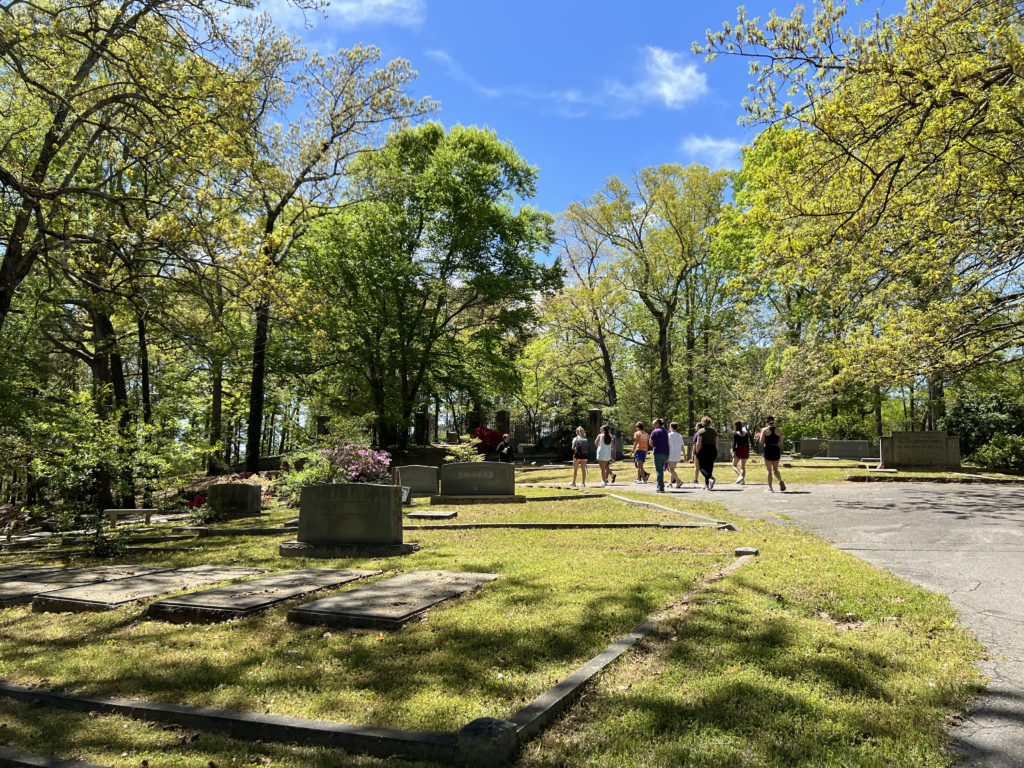
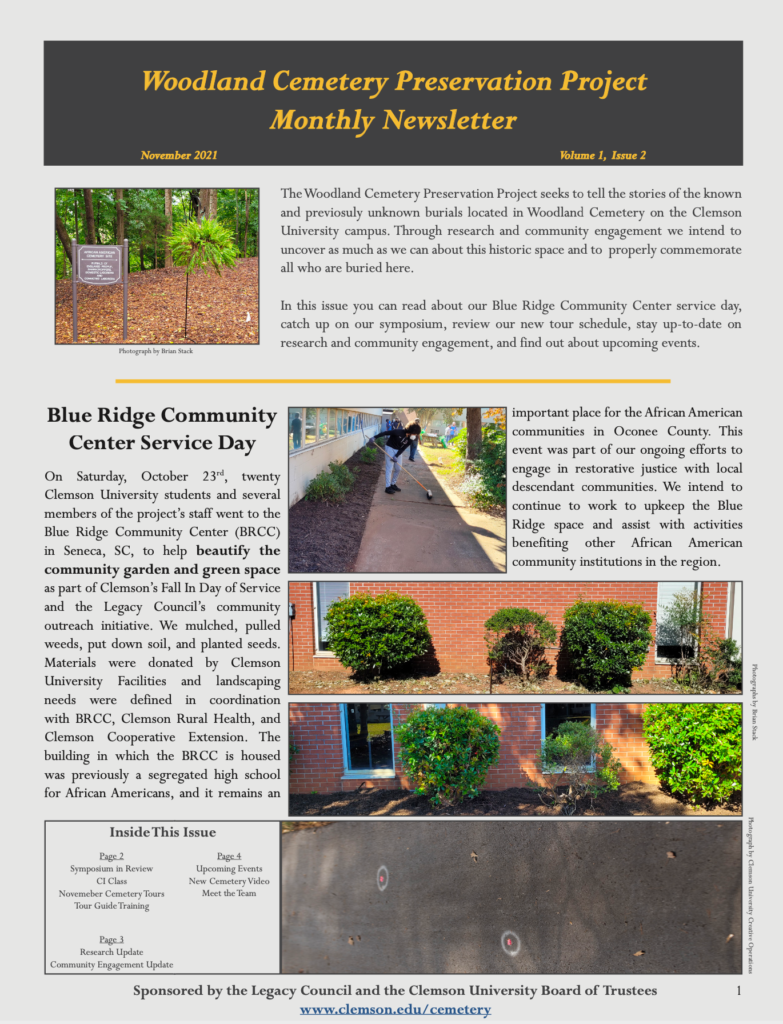 We are publishing a monthly newsletter to share updates on research, community engagement, and upcoming events. Sign up to receive the newsletter through email:
We are publishing a monthly newsletter to share updates on research, community engagement, and upcoming events. Sign up to receive the newsletter through email: 